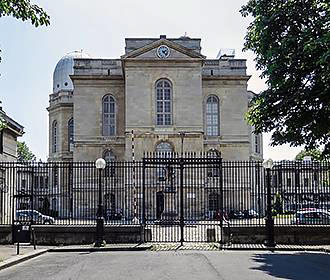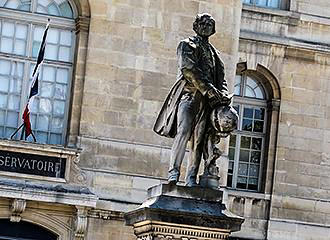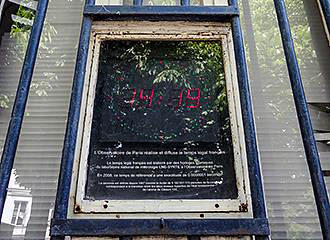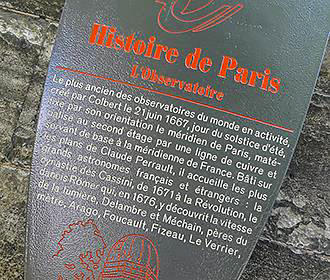The Observatoire de Paris
The Paris Observatory is an historical building constructed in the 1600s and is on the Meridian line of Paris at the end of the Avenue de l’Observatoire at the opposite end to where the Luxembourg gardens finishes, and is one of the largest astronomical centres in the world and is the oldest observatory still in operation.
About the Observatoire de Paris
Now the Observatory of Paris was first founded way back in 1667 during the reign of King Louis XIV, and work was started during the same year on a building for a place where astronomers could work.
It was the initial idea of Jean-Baptiste Colbert, who wanted to enhance the power of maritime France, and the building was designed by the architect Claude Perrault, the brother of Charles Perrault, who was the secretary of Colbert, and the Observatoire de Paris was eventually finished in 1672.
The four sides of the Paris Observatory are orientated to the cardinal points, in other words, North, East, South and West, and with a sombre, or solemn appearance, that is also reflected on the inside of the building, it has now been classified as an historical monument in Paris.
You will also find that the Observatoire de Paris is constructed on the Meridian line, and although the original construction by Claude Perrault has two floors, other buildings and sections were added at different times including additional single story wings in the 1800s.
With the progression of technology, much has been changed to accommodate the latest instruments, although the original instruments still remain, yet a room called the Meridian Room was also designed by Jean Prouve just after World War II, that shows an old map on the floor.
So, when you look at the northern facade of the Paris Observatory, which is the main entrance, you will see large gates and guard houses either side, and in the front courtyard, there is also a statue. This was sculpted by the artist Henri Chapu, and was designed to represent Urbain Jean Joseph Le Verrier, who was a mathematician and astronomer that discovered the planet Neptune, and became the director of the Observatoire de Paris.
Today, the Paris Observatory is the oldest observatory still in operation, although a lot of the staff work at the secondary facility in the Paris suburb of Meudon. Yet this building is the origin point of the Meridian line in Paris, and is the largest French astronomy research centre in the country and one of the largest astronomical centres in the world.
Also there is a rich scientific and technical heritage contained within the l’Observatoire de Paris including the old instrumentation, and once renovations are completed, it will eventually be open once again to the public, to admire this unique part of history.
Visiting the Observatoire de Paris
You will find this historical monument located within the 14th Arrondissement close to numerous other tourist attractions, which means there are numerous different options you can utilise for public transport in Paris that will get you close by.
To start with, you have the Denfert-Rochereau trains station serving the RER trains on line B along with the Metro lines 4 and 6, or in the opposite direction you have the Port-Royal train station also serving the RER B line, plus the Metro station called the Raspail stop is nearby and also serves the Metro lines 4 and 6.
Yet the Bus lines 38, 68, 83, 88, 91 and 216 along with the Noctilien Night Bus Service via lines, N14, N21 and N122 will also get you close by to this historical monument.
However, if you are travelling into or out of Paris via Orly Airport, then you may be pleased to know that there is the OrlyBus with a dedicated stop and ticket office located outside the historical Gare Denfert-Rochereau train station.
But we would like to point out that unfortunately, as of 2018, it is closed for public visits due to renovations taking place, which is in order to comply with the most recent safety rules and legislations for all buildings that allow access to the public.
Yet according to the official Observatoire de Paris website, visits will resume as soon as the work is finished, although you can still get to admire the outside along with the statue of Le Verrier and visit other tourist attractions in the area including the famous Catacombes or the Fontaine des Quatre Parties du Monde also referred to as Carpeaux Fountain or the Fontaine de la Observatoire.



